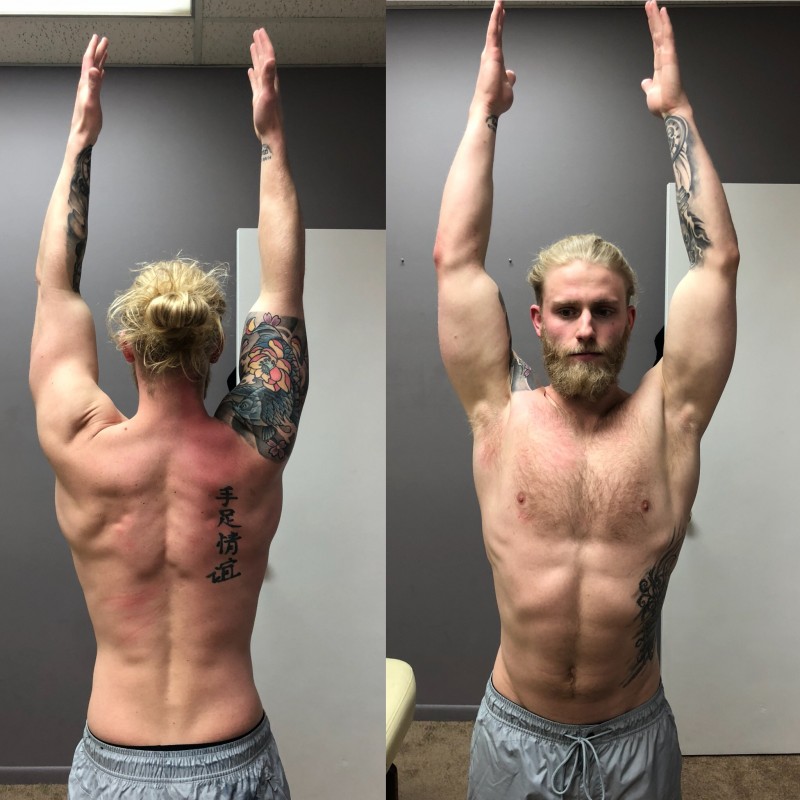
In my opinion the most complicated joint in the human body. A joint that requires stability, mobility, end range control is one that can be deeply misundertstood. Often times the difficulty lies within understanding the multiple joints that comprise the shoulder.
Gleno-humeral joint: Ball and socket. Think golf ball sitting on a T
Scapulothoracic complex: Your scapula laying on your ribcage. Convex (rib cage) vs Concave (scapula) relationship.
Acromiocavicualr Joint: “AC” joint. Has both rotary and translatory movements. Relays largely on ligaments for support. Comprised of the clavicle and acromion.
Sternoclavicular Joint: “SC” joint. Another Concave vs convex relationship. This is comprised of the clavicle, sternum and 1st rib.
With all these moving part it’s difficult to classify an injury or limitation as just a “shoulder problem”. This is why shoulder pathology is difficult to assess and treat. However, most commonly the loss of ROM is due to compensaitoinal ROM being made up elsewhere. The age old saying. “If you dont use it you lose it” is true.
Most often in clinic the heavy loading on these joint structures leave us defaulting on structures that are more robust and stronger. This means the lumbar (erectors) and ribcage relocate anteriorly (forward) to create a more solid foundation for the shoulder to press upon. In reality this foundation is false and is less stable because we need both mobility (more than stability) to keep the shoulder healthy.
In the picture below you can tell how repositioning of the ribcage decreases your true available range of motion. The right side upper extremity now has a shorter distance between the head and arm. This allows for a bigger overhead range of motion.
Repositioning and stabilizing of the ribcage through proper lumbar position, bracing and breathing allows the shoulder to access range of motion that was being taken by poor positioning of the trunk.
So when completeing pressing or pulling motions or exercises over head it is imparative to keep the trunk stable to a certain degree. Allow as much movement as needed based on the associated load. More load means more control. Dynamic exercises such as pull-ups need be controlled. The more force you can produce through your trunk structures (obliques, RA, transverse abdominals) the more ROM you can access.
Hopefully this helps you understand the important relationships of the shoulder joint and how its function is supported by position.









